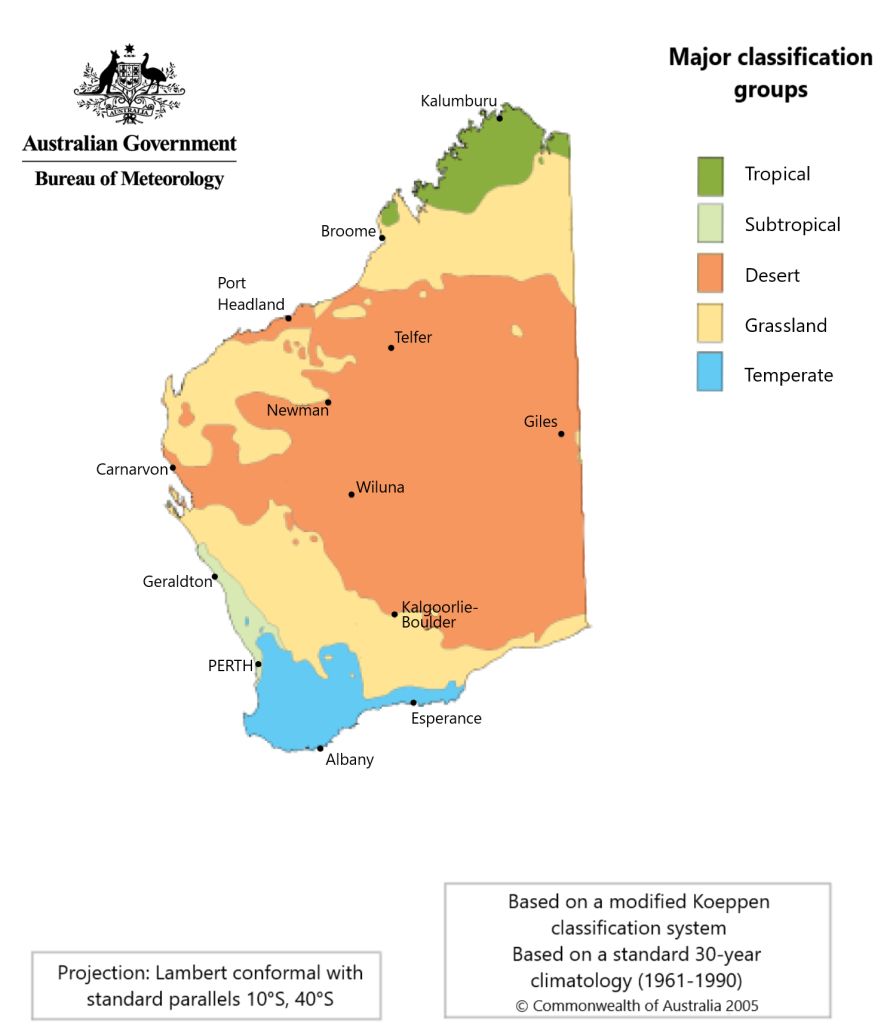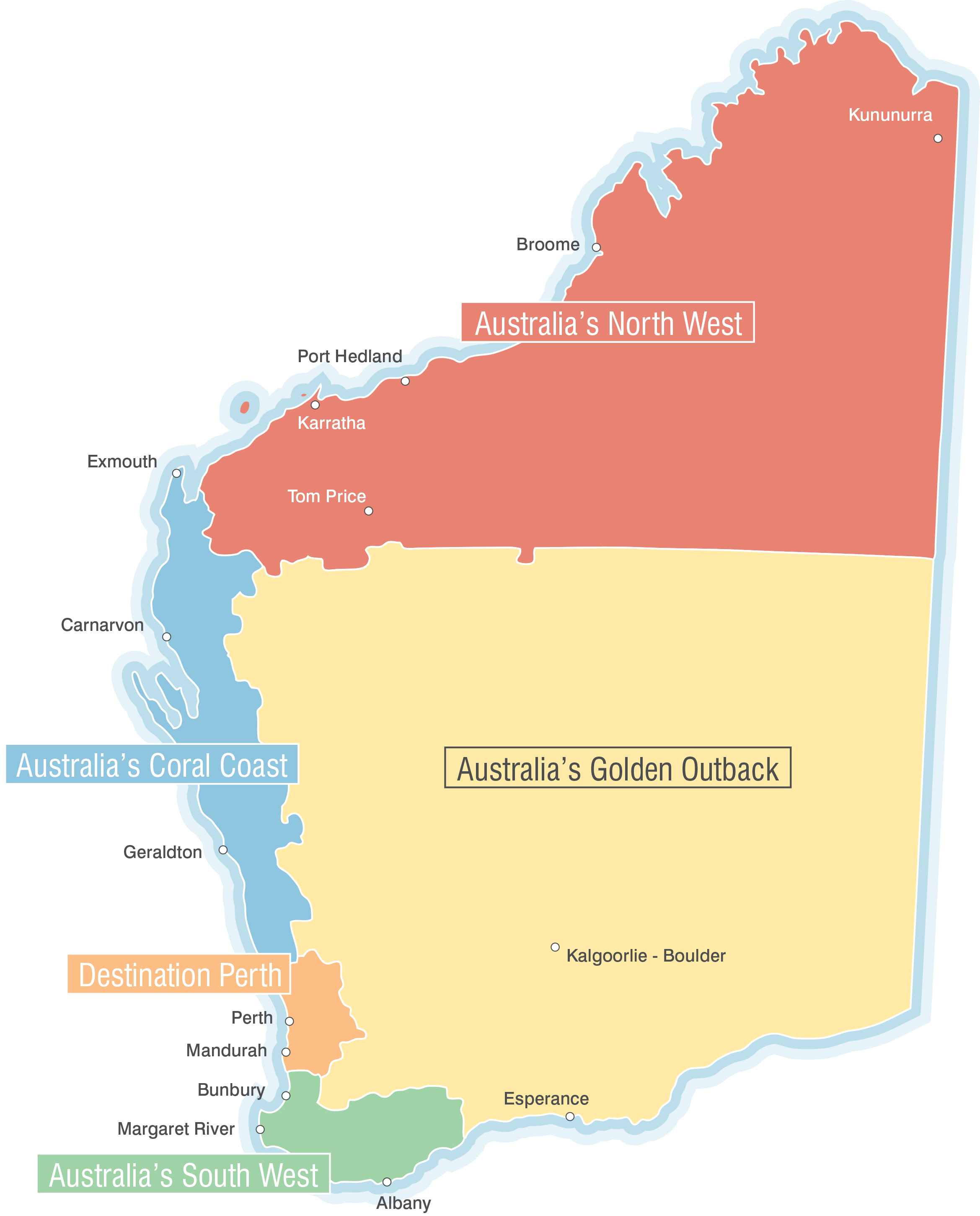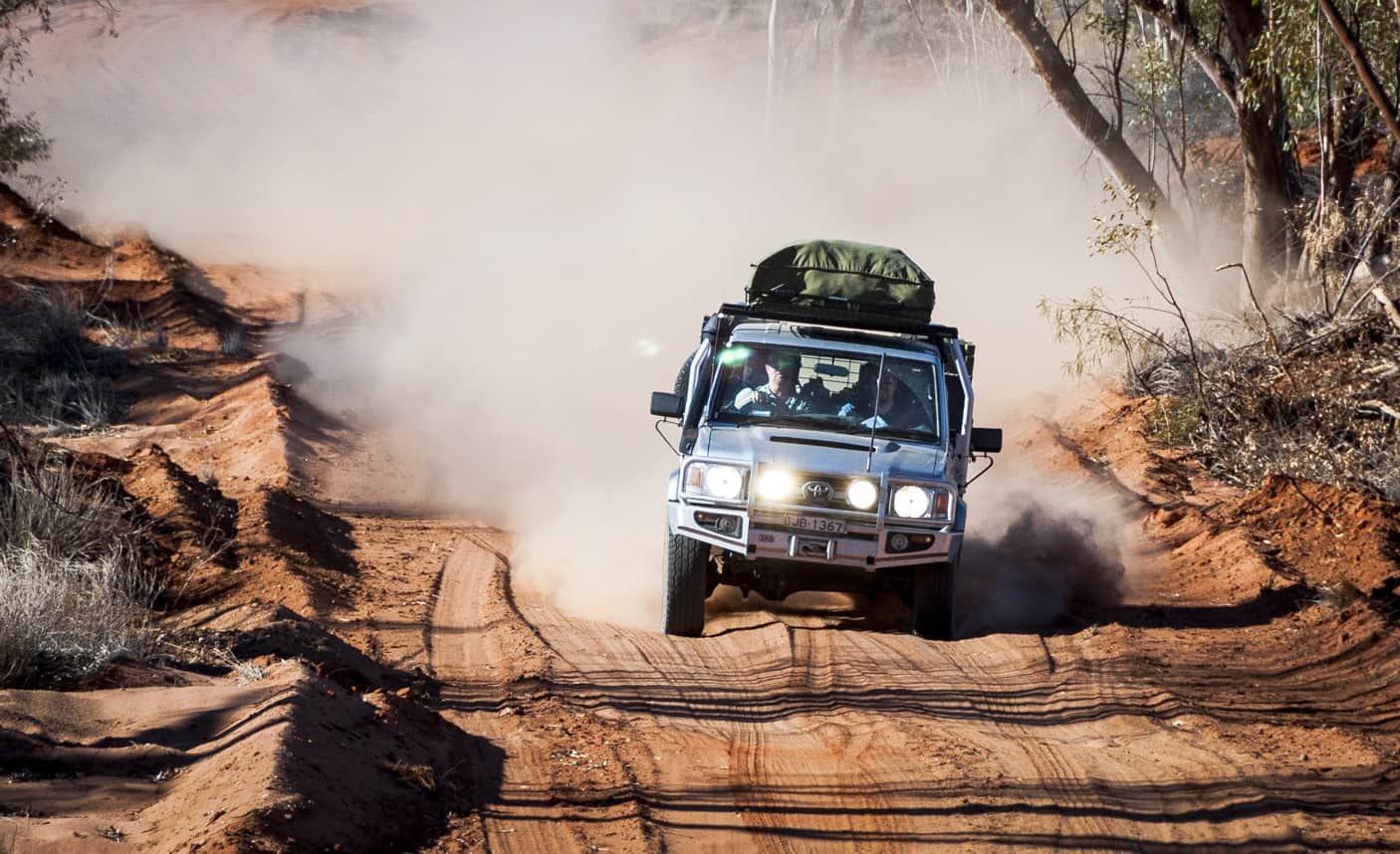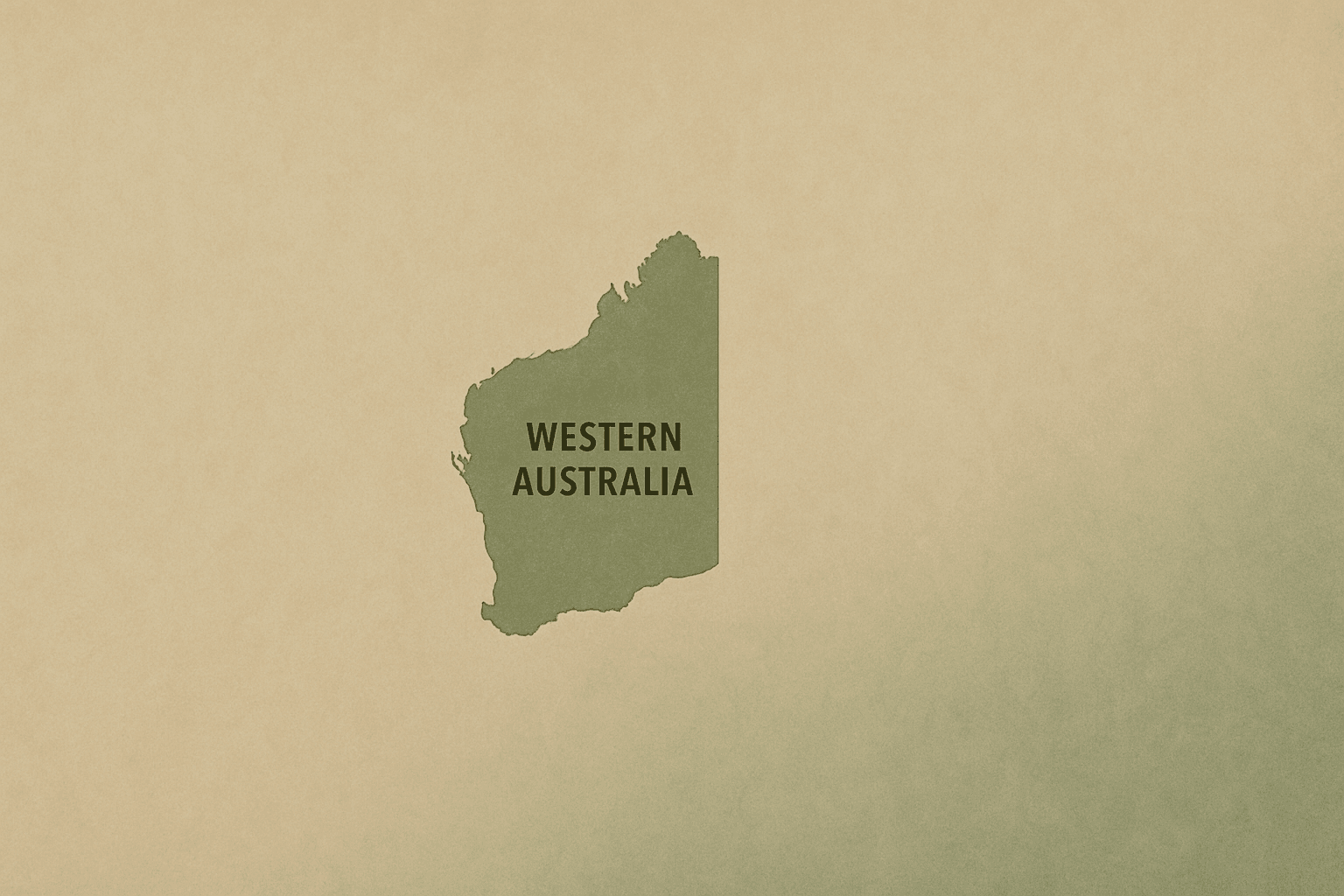Last Updated on October 3, 2025
Planning a road trip in Western Australia and feeling a bit overwhelmed by the weather? I get it. In my years of helping people explore WA, the most common question is about timing it right, because the state’s massive size means you can find tropical downpours and chilly winds on the same day.
Understanding how WA’s climate zones work is the key to a great trip. It helps you avoid flooded roads up north, scorching heat in the outback, and shivering nights down south. This guide will walk you through exactly what to expect and when to go, so you can plan a safe and comfortable drive.
Key Takeaways:
- Northern WA (Kimberley, Pilbara): The best time is the dry season (May-October). Avoid the wet season (November-April) when roads like the Gibb River Road are often closed by floods.
- Southern WA (Margaret River, South West): Great year-round, but spring (September-November) is perfect for wildflowers. Winters (June-August) can bring cold fronts and coastal storms.
- Desert & Outback: Avoid the extreme heat of summer (December-February). Travel in the cooler months and always carry extra water, fuel, and a communication device like a PLB.
A Quick Guide to Australian Geography
Western Australia is huge, covering nearly one-third of the entire continent. This size creates incredibly diverse landscapes and weather patterns you need to be aware of.
From the tropical monsoonal systems in the north to the Mediterranean climate in the south and the arid deserts in between, you can’t treat a WA road trip like a drive in any other state. Knowing the difference is the first step to a successful trip.
Understanding WA’s Main Climate Zones
Western Australia’s varied climate zones create unique travel conditions across the state. Understanding these differences can help you plan your journey more effectively.
Here’s a breakdown of the main zones and what to expect.

The North: Wet and Dry Seasons
The north of WA is defined by two distinct seasons. The dry season, from May to October, is absolutely the best time to visit, with clear blue skies and comfortable temperatures.
This is when you can access iconic spots like the Bungle Bungle Range in Purnululu National Park and drive the famous Gibb River Road. The wet season, from November to April, is a different story. It brings heavy monsoonal rain, high humidity, and widespread flooding. Major routes like the Great Northern Highway can even be cut off at places like Fitzroy Crossing, so you have to plan carefully.
The South: Year-Round Weather
Southern WA has a lovely Mediterranean climate. This means warm to hot, dry summers and mild, wet winters.
Most of the rain falls between June and August. Coastal drives along the South Western Highway are beautiful year-round, but winter storms can bring strong winds and rough seas. In summer, you’ll often get a refreshing afternoon sea breeze known locally as the ‘Fremantle Doctor,’ which provides welcome relief on hot days in Perth.
When you’re doing the Esperance and Albany/Denmark loop, be prepared for chilly weather, even in summer. It’s often windy and it’s not unusual to have rainy days. The Southern Ocean water is always brisk, or as some might say, freezing!
Desert Areas: Extreme Conditions and Isolation
The interior of WA is where things get serious. Desert regions have extreme temperature swings; days in summer can easily top 40°C, while winter nights can drop close to freezing.
This is not the place for a casual drive. You need a properly equipped vehicle, and from my experience at OffGrid Campers WA, this means a reliable 4WD camper is essential for any off-grid travel. We have limitations on where our vehicles can go, as some remote tracks like the Canning Stock Route are not covered by insurance and require expert mechanical skills.
A few key tips I always give people for desert travel:
- Check road conditions and weather forecasts daily on the Main Roads WA website.
- Carry at least 10 litres of water per person, per day.
- Plan your fuel stops meticulously, as roadhouses can be hundreds of kilometres apart.
- Have reliable communication, like a satellite phone or a Personal Locator Beacon (PLB).
The Best Time to Travel in WA
Best Travel Times by Region
Timing your WA road trip makes a world of difference. You want to match your plans to the right season for comfort and safety.

For the Kimberley and Pilbara up north, the dry season is perfect. Down in the South West and Great Southern, spring (September to November) is my favourite time because the wildflowers are spectacular, especially in places like Coalseam Conservation Park.
You can visit the south year-round, but summer gets very busy with locals heading down the coast, and winter can be stormy.
Weather Considerations for Major Routes
The beautiful Coral Coast Highway is best driven in the cooler months. This stretch is fantastic during the whale shark season at Ningaloo Reef, which runs from March to August.
In summer, the risk of cyclones increases, which can disrupt your plans. Always check the Bureau of Meteorology for warnings. The South West circuit is generally fine all year, but I’d advise extra caution in winter when roads can be wet and coastal conditions unpredictable.
Weather Risks and Travel Safety
Here are some of the biggest weather risks to keep in mind.
- Northern WA: In the wet season, never attempt to cross a flooded road. It’s incredibly dangerous. Make sure your vehicle is in top shape, like the ones from OffGrid Campers WA, especially if you’re heading to remote spots.
- Southern WA: The biggest risk in summer is bushfires. I always tell people to check the Emergency WA website before they set off and have a plan in case conditions change.
- Desert regions: Dehydration and vehicle breakdowns are your main concerns. Start your drives early to avoid the worst of the day’s heat and always let someone know your itinerary.
What to Pack for WA’s Weather
Packing for WA’s shifting weather can feel tricky, but having the right gear for each climate zone is a game-changer.
North WA Packing List
The north has distinct wet and dry seasons. If you are travelling near the wet season (November to April), you need to be prepared for rain.
Wet Weather Gear
- A good waterproof jacket and pants.
- Lightweight, quick-dry clothing.
- Waterproof hiking shoes or boots.
- Dry bags to protect your phone, camera, and documents.
Insect Protection
- A strong insect repellent containing DEET, like Bushman.
- Long-sleeve shirts and pants for the evenings.
- A head net for flies, you will thank me for this one!
- A first-aid kit with antihistamines for bites.
South and Desert Packing List
In the south and desert areas, you need to be ready for big temperature swings. Cool mornings, hot days, and chilly nights are common.
Desert Safety Gear
- A large water container, aiming for at least 10 litres per person.
- High-SPF sunscreen and zinc.
- A wide-brimmed hat and sunglasses.
- An emergency communication device like a Garmin inReach or ZOLEO.
- A basic vehicle repair kit with a tyre-pressure gauge and deflator.
And I can’t say this enough: make sure you always pack a fly net. Those pesky flies can get insanely annoying at times!
Vehicle Setup Requirements
Your vehicle also needs to be ready for WA’s different climates. At OffGrid Campers WA, our vehicles are set up to handle these challenges.
Power and Energy
- Solar power systems to keep you off-grid for longer.
- Advanced dual-battery setups.
- Reliable fridges, like those from Engel or Dometic, to keep food fresh.
Water and Comfort
- Plenty of onboard water storage.
- Climate-controlled sleeping areas.
- The option to hire Starlink internet so you can get up-to-date weather information anywhere.
Weather-Safe Driving Tips
Driving across WA’s varied climates means changing your approach to stay safe.
Wet Season Driving
The wet season in northern WA (October-April) demands respect. Here’s what I recommend.
- Check the Bureau of Meteorology (BOM) website daily for weather warnings.
- Make sure all your lights and hazard signals are working perfectly.
- Ensure your tyres, preferably All-Terrain tyres, have plenty of tread.
- Check that your windscreen wipers are in good condition.
When you’re on the road in the rain, slow down and drive below the speed limit. Leave plenty of space between you and the car in front, and never, ever drive through flooded water.

Desert Driving Tips
When you head into WA’s dry, arid landscapes, your driving style needs to change.
Key safety measures:
- Check tyre pressure regularly, as heat can cause it to increase. You may need to lower it for sandy tracks.
- Carry enough fuel to get between remote roadhouses.
- Take breaks often to avoid fatigue, and watch out for kangaroos at dawn and dusk.
Emergency preparation:
- Bring more water than you think you’ll need.
- Pack basic recovery gear like Maxtrax and a shovel.
- Use a service like Starlink to check for weather updates.
- Share your detailed travel plans with a reliable contact.
Coastal Road Safety
Coastal routes come with their own challenges, like strong winds and corrosive salt spray.
Dealing with wind:
- Keep a firm two-handed grip on the steering wheel.
- Be ready for sudden gusts, especially when passing trucks.
- Slow down when it’s windy.
- Give yourself more room when overtaking other vehicles.
Protecting your vehicle:
- Wash the undercarriage and exterior of your vehicle after driving near the coast to prevent salt damage.
- Always check local forecasts for any coastal weather warnings.
At OffGrid Campers WA, our vehicles have high-clearance suspension and reliable navigation systems, and with Starlink connectivity, you can get real-time updates on conditions. This gives you extra peace of mind.
A quick note: Beach driving is only allowed in specific areas like Lucky Bay and Wharton Beach near Esperance. Always check local rules and tide times before you even think about driving on the sand.
Weather-Smart Camping
Campsite Selection by Season
In northern WA’s wet season, always choose an elevated campsite with good drainage to avoid waking up in a puddle. Look for spots that offer a natural shield from strong winds.
 Source: National Geographic
Source: National Geographic
For summer camping down south, shade is your best friend. In desert regions, find a site with morning shade to give you a cooler start to the day, and never camp in a dry creek bed, as flash floods can happen.
Temperature Management
Managing temperatures at your campsite is just as important as preparing your vehicle. Position your setup to maximise airflow. Rooftop tents are great for this as they catch the breeze.
You can use your vehicle to block the harsh afternoon sun. For chilly southern nights, especially from June to August when temperatures can drop to around 5°C, a good sleeping bag and thermal layers are essential.
Pest Control While Camping
Once your campsite is set up, it’s time to think about pests. In tropical areas, mosquitoes, midges, and March flies are most active at dawn and dusk.
Vehicle mesh screens are a lifesaver. Store your food in sealed containers to keep ants and other critters out, and clean up any food scraps right away. Along the coast, waterproof storage will protect your gear from moisture and salt spray.
Final Thoughts on WA Climate Zones
Travelling across WA’s diverse climate zones requires good planning and a dependable vehicle. The weather truly dictates where you can go and what you can do.
From the tropical north to the temperate south, having the right gear and knowledge is the key to a great trip. As we say at OffGrid Campers WA, we blend our love for travel with local expertise to help you get out there safely.
By understanding WA’s weather patterns, you can plan a road trip that is both safe and unforgettable. Travel smart, camp responsibly, and enjoy the incredible landscapes this state has to offer.

